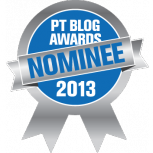 What defines clinical excellence? In his book "Outliers", Malcolm Gladwell writes about the "10,000 Hour Rule". Based on his research and observations, he claims that the key to success in any field is a matter of attaining 10,000 hours of practice.
What defines clinical excellence? In his book "Outliers", Malcolm Gladwell writes about the "10,000 Hour Rule". Based on his research and observations, he claims that the key to success in any field is a matter of attaining 10,000 hours of practice.
After four days of interacting with many physical therapists, physical therapist assistants, educators, and students in San Diego, it became readily apparent to me that Malcolm Gladwell was describing clinical excellence in the physical therapy profession. Very well, as a matter of fact.
Clinical excellence is not a degree program. It is time in the clinic - assessing, treating, observing.
So what does 10,000 hours look like in physical therapy? And why should the physical therapy profession care?
If you simply do the math on this one, you will find that 10,000 hours - at 40 hours per week - is 250 weeks. Assuming 50 weeks a year, you are looking at a solid 5 years of clinical practice - minimum. That's a lot of time in direct patient care.
But I would suggest that the hours aren't the critical aspect of the discussion. The perception of clinical excellence, and what drives it, is highly critical.
The physical therapy profession is moving towards the DPT as the entry level to practice. While in San Diego, I heard countless discussions about educational programs, residencies, and fellowships. More than once, I heard talk of the importance of the doctorate degree for the future development of the physical therapy profession.
All this talk of degrees misses the mark.
The real learning - and the real evolution towards clinical excellence - occurs in the clinic. Having been a clinician for 25 years, I have always told students that it feels like the clinical world barely makes sense after the first 100 patients. At 30 minutes per patient visit (probably a lot of direct patient time in most clinical environments anymore), and an average of 8 visits per patient (also, not uncommon in the clinical setting), you would have accumulated 400 hours. You feel like you really start to have a handle on things after about 1000 patients - or 4,000 hours. That is just scratching the surface of clinical excellence according to Gladwell.
Here's the interesting twist on the degree issue. Exposure to patients - and the process of differential diagnosis while treating them - is a huge element in clinical success. So even if your entry level degree is a Bachelors in PT (extinct in this country in the mid-'90s), you would still have at least 15 years of clinical practice behind you by now. That is a lot of patient care. You would have already accrued about 30,000 hours of clinical practice.
At that point, you may have clinical excellence, but you don't have a doctorate. Of course, the powers-that-be certainly didn't consult with Gladwell when they proposed the transition from Bachelors to Masters to Doctorate degrees.
The fallacy that exists is that there is a relationship between the future of our profession and the degree program completed. Our profession should be defined by clinical excellence – not a degree program. This is what we need to promote to the consumer.
Let me know when you get to 10,000 hours – with whatever degree you earned along the way.
Important note: Cast your vote in the 2013 PT Blog Awards sponsored by Therapydia! This is the first ever award contest for PT bloggers. Nominations will be collected through January 31, and on February 1, 2013, the top five nominees in each category will be released. Click here to vote and be sure to fill in “Allan Besselink” as your choice for Best Overall Blog, Best PT Blog, and Best Advocacy Blog. Thanks for your support!
Photo credits: CarbonNYC
 "Running Injuries: Etiology And Recovery- Based Treatment" (co-author Bridget Clark, PT) appears in the third edition and fourth editions of "Clinical Orthopaedic Rehabilitation: A Team Approach" by Charles Giangarra, MD and Robert C. Manske, PT.
"Running Injuries: Etiology And Recovery- Based Treatment" (co-author Bridget Clark, PT) appears in the third edition and fourth editions of "Clinical Orthopaedic Rehabilitation: A Team Approach" by Charles Giangarra, MD and Robert C. Manske, PT.
 Allan Besselink, PT, DPT, Ph.D., Dip.MDT has a unique voice in the world of sports, education, and health care. Read more about Allan here.
Allan Besselink, PT, DPT, Ph.D., Dip.MDT has a unique voice in the world of sports, education, and health care. Read more about Allan here.
 Top 5 finalist in three categories: "Best Overall Blog", "Best PT Blog" and "Best Advocacy Blog".
Top 5 finalist in three categories: "Best Overall Blog", "Best PT Blog" and "Best Advocacy Blog".